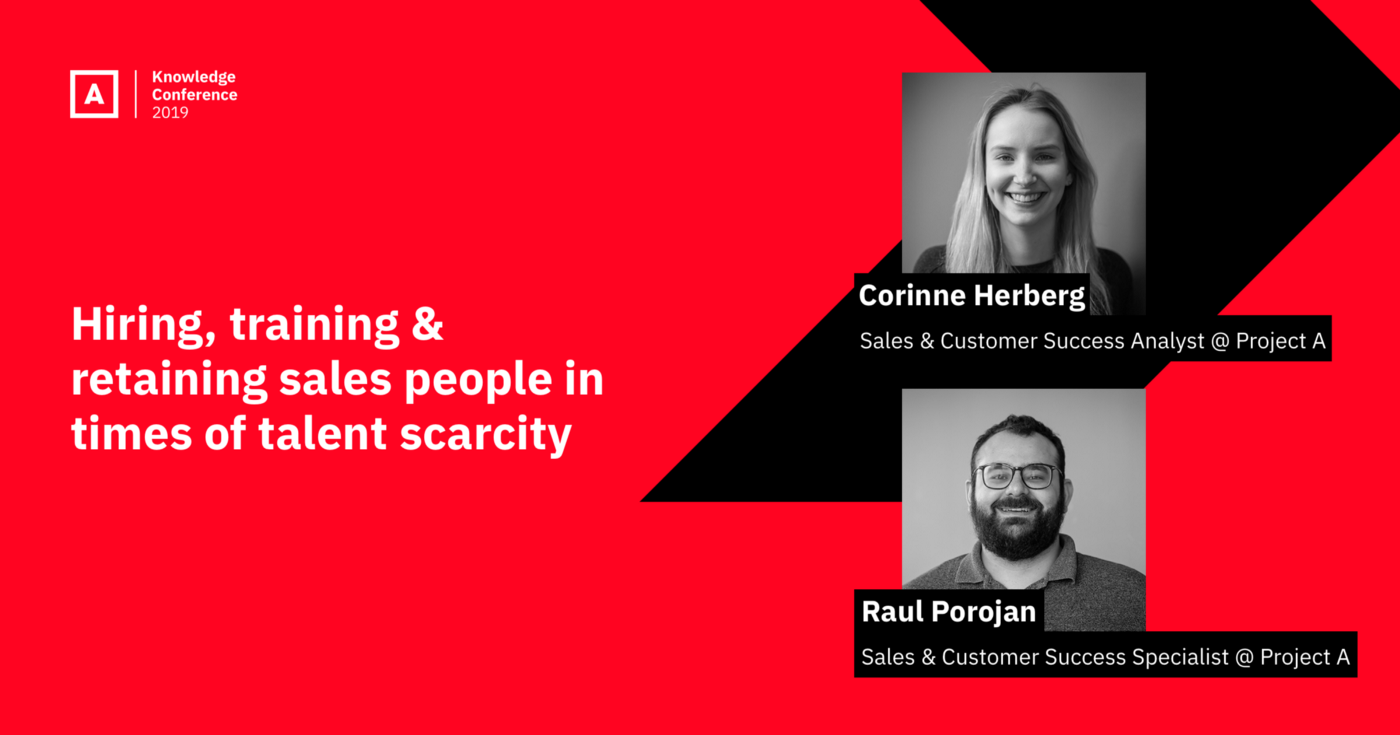By Raul Porojan and Corinne Herberg
That most anticipated day. Finally. Today’s the first day on the job for your Sales Wonder Woman. You spent four months scouting LinkedIn, talked to dozens of self-proclaimed SAAS sales experts, and had your heart shattered when the first candidate you made an offer to turned it down. The day he handed in his notice, he was offered a new title and that proverbial suitcase of money to stay. A common vision, a shared love for Craft Beer and a chance to make all kinds of dents in the universe with your startup couldn’t stand up to that.
So you kept going.
Sell me this pen. What do you think makes a great salesperson? How competitive are you? What would your poodle say if asked about your weaknesses? One candidate faded into another. Was it Michael or Marcus. Too expensive anyway. Lacking.

But not her, no. Wonder Woman, equipped with deadly sharpness, a rolodex full of industry contacts and an arsenal of open-ended questions, will be the gleaming beacon of your young sales organization. She will prove product-market fit and smash through MRR goals on schedule for the next funding round in six months. But by the time you dust off that slide deck, Wonder Woman will be gone. She will have lasted less than four months.
- By week five, her lack of deep product knowledge will lose her that big client.
- By week eight, she will have exhausted her personal network and complained about a lack of qualified leads.
- By week eleven, just when things will be looking up after her first bunch of sales, three of those clients will cancel their contracts.
- By week thirteen, that notice will be on your desk. This is not what she was expecting. No suitcase of money to get her to stay.
You will tell the investors that she wasn’t Wonder Woman after all. But no worries, you’re already in deep talks with two new heroes.
Rare is the founder who’s fully happy with the present state of their sales organization. Building and maintaining a high-performing sales unit is one of the biggest challenges for startup leaders. It’s not always that performance is lacking, or that the people aren’t good enough. It’s that hiring them is arduous, lengthy and expensive. It’s that keeping them informed, happy and trained takes up three management FTEs, if that’s even enough. It’s the constant worry about your sales compensation scheme. And it’s that nightmare last week that left you drenched in sweat and terrified of your top performers leaving for the competition. Alright, that was a tad dramatic, but the margins for error are tiny and doomsday is sometimes just a misstep away.
As with Wonder Woman, it might be that rushed onboarding and sparse training documentation due to limited resources that lead to suboptimal product and process knowledge. It might be a misconstructed bonus scheme producing short-sighted sales and early churns. Or maybe your hypothesis was flawed that you need to hire someone who has extensive industry contacts and SAAS experience.
We have yet to find someone who has figured it all out. But in times of serious talent draught at the top of the sales echelon, we’re seeing a heavy trend towards hiring for potential and building one’s own talents from the ground up. We’ve also seen some really good approaches and have combined them in our own design of the sales graduate program here at Project A. Yes, it will take a lot of time and work to train your talent. But it can be your way out of the conundrum and the unforgiving search for those sales heroes. If you put in the work and get this right, you might just be building up a mean, hero-producing machine of your own.
Roughly speaking, there are five pillars to successful sales recruiting and retention:
- Identification of talent profile -> Who are you looking for? Which characteristics should candidates exhibit?
- Sourcing -> Where do you find those people and how do you approach them? How do you get them to apply by themselves?
- Assessment & Convincing -> How do you assess their fit against the profile you’re searching? How do you convince them to join your company?
- Training -> How do you onboard and train them? How do you rate their performance and help them improve themselves?
- Retention -> What’s your sales management process? How do you incentivize salespeople? Which career opportunities do you offer?
We’re confronted with these and many more questions on a regular basis, either inside Project A or when talking to our founders and sales leaders. This is why we came up with our own approach which we will share at this year’s Knowledge Conference.

We will talk about our insights gained from building a sales graduate program and give best practices from some impressive sales leaders within our portfolio as well as outside of it. Most of all, we’re looking forward to discussing your individual challenges and working on your own solutions. Join us and let’s find out how we can get better in building our own sales heroes!